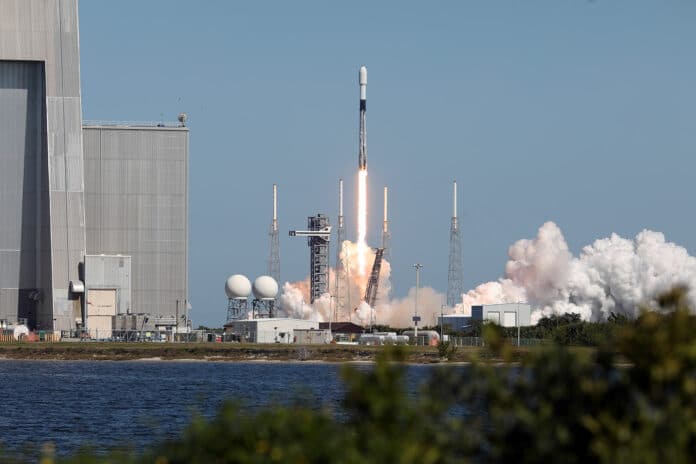Northrop Grumman Corporation’s Cygnus cargo delivery spacecraft was successfully launched to the International Space Station by SpaceX’s Falcon 9 rocket from Space Launch Complex 40 at Cape Canaveral Space Force Station in Florida.
The launch was successful, and this is the 20th operational cargo mission for Cygnus, designated as NG-20. SpaceX was not involved in the previous 19 missions, which all lifted off atop Antares or Atlas V rockets.
Under NASA’s Commercial Resupply Service-2 (CRS-2) contract, Cygnus is carrying more than 8,200 pounds of critical supplies, equipment, and science experiments for astronauts on the International Space Station.
The experiments aboard Cygnus involve the growth of cartilage and how it could potentially help treat joint damage and disease. Another experiment involves testing the 3D printing of metals in microgravity, which is being conducted by the European Space Agency.
Additionally, the Kentucky Re-entry Probe Experiment-2 will gather data during the spacecraft’s re-entry into Earth’s atmosphere, specifically measuring thermal protection systems for spacecraft and their contents, which is difficult to simulate on the ground.
Once it reaches the International Space Station on February 1, Cygnus will remain attached to the station for up to six months. It may also perform additional services like reboosting the station’s orbit to counteract atmospheric drag.
Northrop Grumman’s Cygnus is the only U.S. spacecraft that provides reboost capability for the International Space Station. It uses Northrop Grumman’s vertical integration capabilities and incorporates products manufactured by the company, like spacecraft structures, propellant tanks, UltraFlex solar arrays, and loop heat pipe radiators for thermal control.
Each Cygnus spacecraft is named in honor of an individual who has made significant contributions to human spaceflight. For the NG-20 mission, Cygnus celebrates the legacy of Dr. Patricia “Patty” Hilliard Robertson, a medical doctor, avid aerobatic pilot, and NASA astronaut. She completed a two-year Space Medicine fellowship at the University of Texas Medical Branch and NASA’s Johnson Space Center. Robertson was selected as an astronaut in 1998 and scheduled to fly to the ISS in 2002 before her untimely death in 2001 from injuries sustained in a private plane crash.
“This mission reflects Cygnus’s flexibility to launch on a variety of launch vehicles, demonstrating our ability to deliver on our commitments to support NASA’s mission. With a decade of experience in cargo and logistics services, Northrop Grumman will continue supporting missions on the International Space Station and future civil and commercial exploration,” said Cyrus Dhalla, vice president and general manager of tactical space systems, Northrop Grumman.
The three robotic cargo craft that currently service the ISS are Cygnus, SpaceX’s Dragon capsule, and Russia’s Progress vehicle. While Progress and Cygnus are expendable spacecraft, Dragon is reusable and can survive the trip through Earth’s atmosphere, splashing down softly under parachutes in the ocean.
